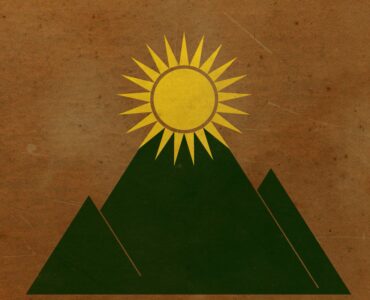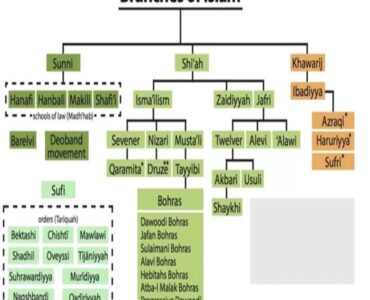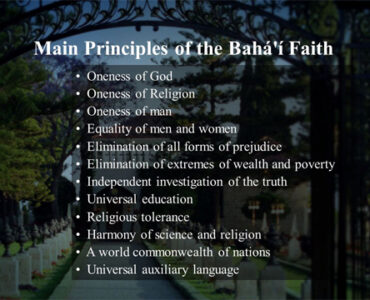
The Hegira: Muhammad’s Flight From Mecca To Medina
Hijrah or Hijra was the journey of the Islamic prophet Muhammad from Mecca to Medina. The year in which the Hijrah took place is also identified as the epoch of the Lunar Hijri and Solar Hijri calendars; its date equates to 16 July, 622 in the Julian calendar. The Arabic word hijra means “departure” or “migration,” among other definitions. It has also been transliterated as Hegira in medieval Latin, a term which is 88*istill in occasional use in English.
Early in Muhammad’s preaching of Islam, his followers only included his close friends and relatives. Following the spread of his religion, cMuhammad and his small faction of Muslims faced several challenges including a boycott of Muhammad’s clan, torture, killing, and other forms of religious persecution by the Meccans. Toward the end of the decade, Abu Talib, Muhammad’s uncle, who supported him amidst the leaders of Mecca, died. Finally, the leaders of Mecca ordered the assassination of Muhammad, which was to be executed by 11 men with swords.
In May of the year 622, after having convened twice with members of the Medinan tribes of Aws and Khazraj at al-‘Aqabah near Mina, Muhammad secretly left his home in Mecca to emigrate to the city, along with his friend, father-in-law and companion Abu Bakr. The prophet Muhammad’s arrival at Medina was warmly welcomed, resulting in the renaming of the city from Yathrib to Al Madinah Al Munawwarah (The Enlightened City).
Medina was inhabited by Arabs, Jews and Christians. The Arabs consisted of two tribes — the Banu Aws and Banu Khazraj. The Aws and Khazraj were constantly at war with each other, and this made traditional rules for maintaining law and order dysfunctional, and, without a neutral man with considerable authority over things, stability seemed unlikely.
Born in sixth century Arabia, Muhammad must have known and even encountered Jews and Christians in the area. Being in the marketplace, he could hardly have avoided them. Paul lived and traveled from Syria (Damascus) to Arabia and quite likely established churches along the way. Then, 500 years later, along comes Muhammad. He has dreams and visions, takes in elements of the two religions, along with some of the polytheism which existed in Arabia and ends up with a ew religion, known as Islam and a new god, called Allah.
It was during Dhu al-Hijjah of the year 620 AD, Muhammad convened with some members of the Banu Khazraj tribe from Medina near the al-‘Aqabah Hill in Mina, just outside of Mecca, that Muhammad presented to them the doctrines of Islam, and recited portions of the Qur’an. Apparently impressed by this, they embraced Islam, and during the pilgrimage of 621, five of them brought seven others with them. These twelve informed Muhammad of the beginning of gradual development of Islam in Medina, and took a formal pledge of allegiance at Muhammad’s hand, promising to accept him as a prophet, to worship none but one god, and to renounce sins including theft, adultry, and murder, in what is now known as the First Pledge of al-‘Aqabah. At their request, Muhammad sent with them Mus’ab ibn ’Umair, to teach them the instructions of Islam. The following year, in 622, a delegation of around 75 Muslims consisting of members of both the Aws and Khazraj from Medina restated the terms of the First Pledge and also assured Muhammad of their full support and protection if the latter would migrate to Medina as an arbitrator to reconcile among the Aws and Khazraj. This is known as the Second Pledge at al-Aqabah, and was a religiopolitical success that paved the way for the Medinan Hegira. Following the pledges, Muhammad encouraged his followers to migrate to Medina, and in a span of two months, nearly all the Muslims of Mecca migrated to the city.
Muslims believe Muhammad waited until he received divine direction to depart from Mecca. In anticipation of receiving this direction, Muhammad began making preparations and informed Abu Bakr. On the night of his departure, Muhammad’s house was besieged by men of the Quraysh, who had seen large numbers of the Muslims leave the city and had planned to kill him as soon as he left. Muhammad, who was renowned for his trustworthiness, owned various properties of members the Quraysh entrusted to him and he asked Ali to stay behind to return them and to fulfill his obligations on his behalf. Muhammad asked Ali to wear his cloak and to lie down on his bed assuring him of God’s protection. ##ee3e Ali had worn Muhammad’s cloak, leading the assassins to think Muhammad had not yet departed. Ali risked his life by staying in Mecca but ultimately survived the plot. He would later leave for Medina with his mother, Fatima bint Asad, Muhammed’s daughters, Fatimah and Umm Kulthum, as well as two other women, Muhammad’s wife Sawda and wet-nurse Umm Ayman. Muhammad and Abu Bakr left the city and took shelter in a cave atop the Thawr mountain south of Mecca before continuing their journey to elude the Quraysh party pursuing them led by Suraqz bin Malik. They stayed in the cave for three days before resuming their journey. During the journey, whenever Suraqa neared Muhammad and Abu Bakr, Suraqa’s horse stumbled until he finally gave up on the desire of capturing Muhammad. Muhammad and Abu Bakr turned to the Red Sea, following the coastline up to Medina, arriving at Quba. He stopped at Quba’ and established a mosque there. He waited there for fourteen days for Ali and his family to join him. Thereafter he continued to Medina, participated in their first Friday prayer on the way. Upon reaching the city, they were greeted cordially by its people.
Muhammad’s followers suffered from poverty after fleeing persecution in Mecca and migrating with Muhammad to Medina. Their Meccan persecutors seized their wealth and belongings left behind in Mecca. Beginning in January of 623, Muhammad led several raids against Meccan caravans travelling along the eastern coast of the Red Sea. Members of different tribes were thus unified by the urgency of the moment. This unity was primarily based on the bonds of kinship.
At Medina, Muhammad built a theocratic state and led raids on trading caravans from Mecca. Attempts by Meccan armies to defeat the Muslim forces failed, and several leading Meccans immigrated to Medina and became Muslims. Muhammad later became more conciliatory to Mecca, and in 629 he was allowed to lead a pilgrimage there in exchange for a peace treaty. Shortly after, he was attacked by allies of the Meccans, and Muhammad denounced the treaty. In January 630, he returned to his birthplace with 10,000 men, and the Meccans swore allegiance to its Muslim conquerors. He was now the strongest man in Arabia. During the next few years, most of the peninsula’s disparate Arab tribes came to him to ask for alliance and to convert to his religion.
At Medina, Muhammad built a theocratic state and led raids on trading caravans from Mecca. Attempts by Meccan armies to defeat the Muslim forces failed, and several leading Meccans immigrated to Medina and became Muslims. Muhammad later became more conciliatory to Mecca, and in 629 he was allowed to lead a pilgrimage there in exchange for a peace treaty. Shortly after, he was attacked by allies of the Meccans, and Muhammad denounced the treaty. In January 630, he returned to his birthplace with 10,000 men, and the Meccans swore allegiance to its Muslim conquerors. He was now the strongest man in Arabia. During the next few years, most of the peninsula’s disparate Arab tribes came to him to ask for alliance and to convert to his religion.
By his death, on June 8, 632, Muhammad was the effective ruler of most of Arabia, and his rapidly growing empire was poised for expansion into Syria and Iraq.
Within 20 years, the Byzantine and Persian empires had fallen to the prophet’s successors, and during the next two centuries vast Arab conquests continued. The Islamic empire grew into one of the largest the world has ever seen, stretching from India, across the Middle East and Africa, and up through Western Europe’s Iberian peninsula. The spread of Islam continued after the fragmentation of the Arab empire, and many societies in Africa and Asia voluntarily adopted Muhammad’s religion. Today, Islam is the world’s second-largest religion, a d is expected to surpass Christianity in size before the end of the twenty-first century.
The Hegira
115 – 005
https://discerning-Islam.org
Last Updated: 04/2022
See COPYRIGHT information below.



